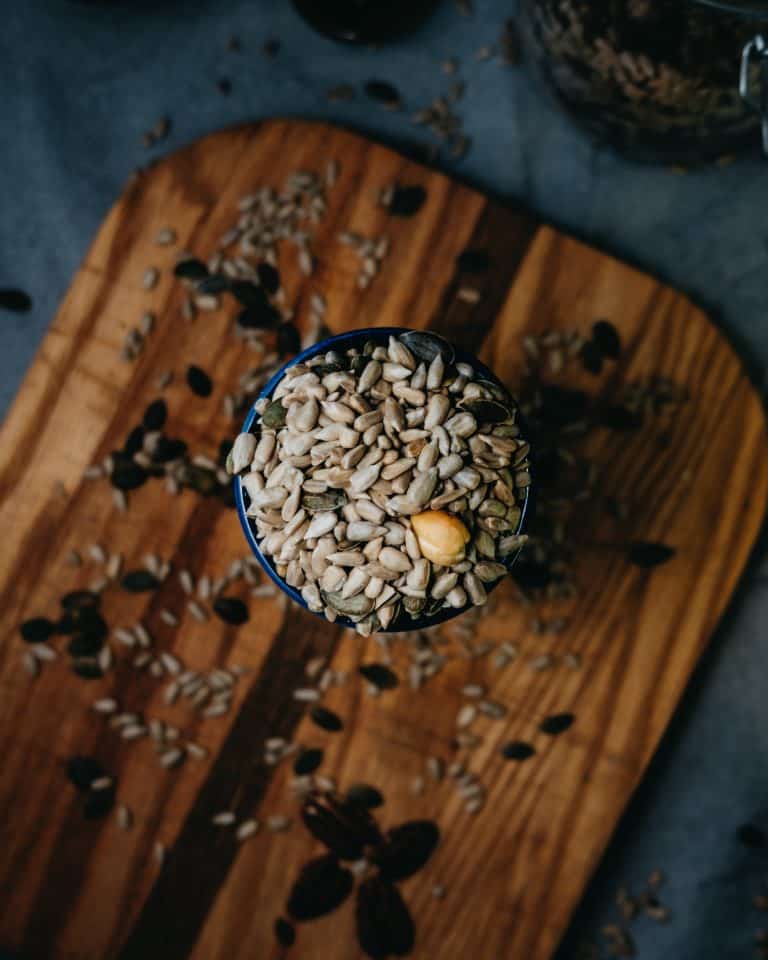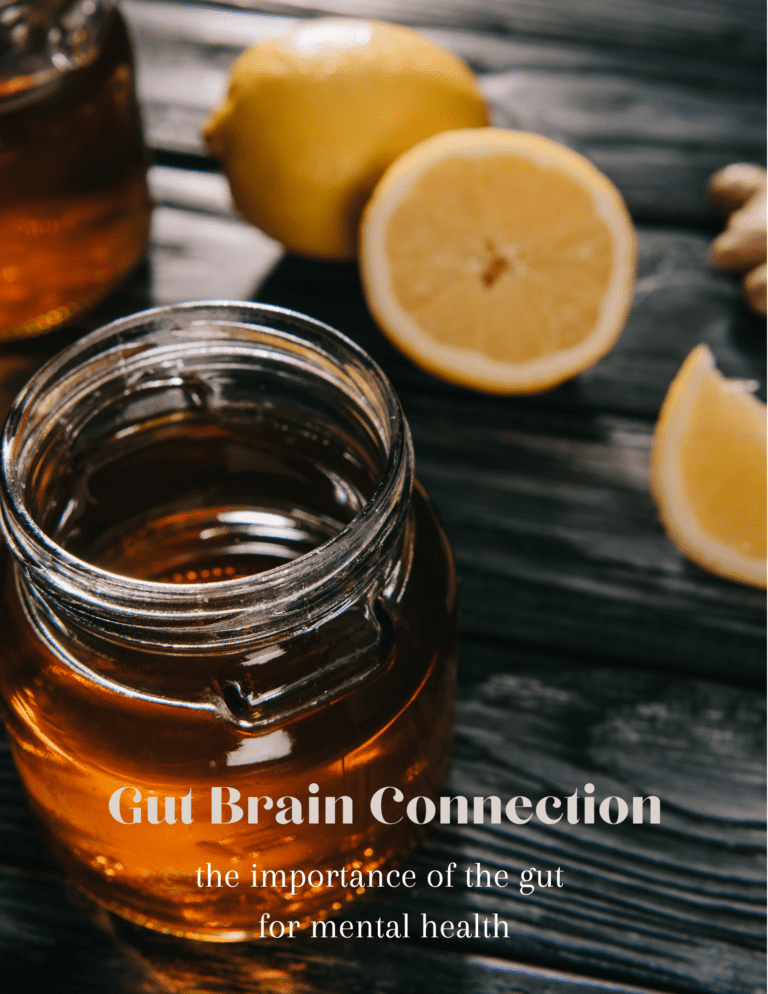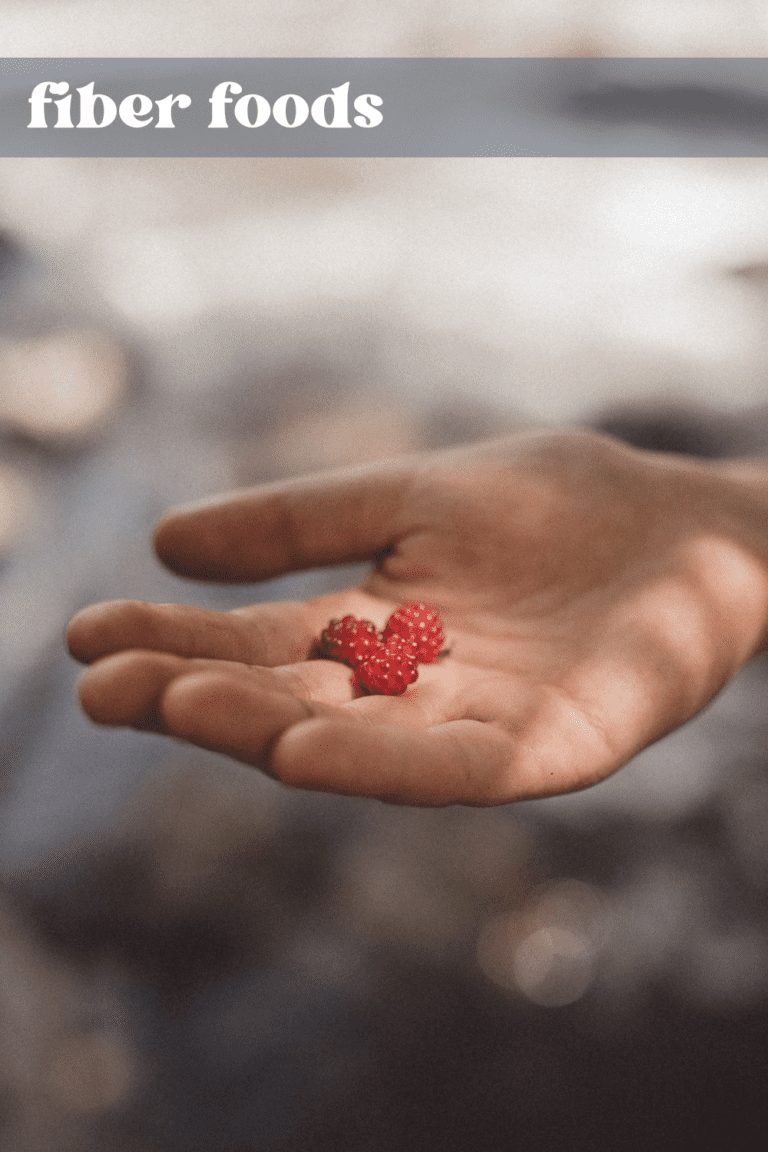Here are 7 high fiber foods that you should be eating for longevity. Each of these high fiber foods contains more than 4 grams of fiber per serving and contain both soluble and insoluble fiber.

Fiber is essential to our digestive systems. From feeding our gut microbiome to defending our body from chronic illness, fiber is one of, if not THE most important part of our diet.
Recently, the gut microbiome has been getting a lot of attention. Rightfully so. Our health, in many ways, is determined by how well our microbiome is doing. Luckily, there is one surefire way to be optimizing it’s function and that is through the consumption of fiber.
Most Americans do not get enough fiber in their diet. The average person should be getting roughly between 25-35 grams of fiber per day. Thats HARD to do; trust me, I’ve tried. I even don’t get my daily recommended amount most days. It is definitely something we have to be aware of and conscious of when choosing our meals.
There are some easy ways to get fiber in, which I will discuss in this post further on, but I wanted to touch on why it is so important. Not only do we need it to feed our gut bugs, but it’s also critical for healthy digestive function, blood sugar control, and waste elimination.
The rates of Colorectal Cancer (colon cancer) have been steadily increasing and more so in younger adults. High dietary fiber intake has shown an inverse relationship with colon cancer and low fiber intake has been correlated with increased cancer risk (1).
By increasing our fiber foods, we can ensure that we are setting ourselves up for healthy digestive systems and possibly preventing some chronic disease that may affect our longevity. Below are some fiber rich foods that I try to get in my diet regularly.
Best Fiber Foods
Raspberries
One of the fruits with the highest fiber content is raspberries. You can mix them in yogurt, put them on pancakes, oatmeal, or ice cream. This little fruit packs a punch with about 4 grams of fiber per 1/2 cup. That’s a lot of fiber! My rule of thumb when looking for a good source of fiber is > 4 grams per serving.
Another fruit in the same family that provides an equal amount of fiber is blackberries. So, if you’re not a huge raspberry fan or just need to switch it up, then try those!
Oatmeal
Oatmeal is essential because it is so versatile. You can make muffins, pancakes, baked oatmeal, and so much more. You can eat it hot or cold and with a variety of toppings. Oatmeal provides 4 grams of fiber per 1/2 cup serving.
Oatmeal is a soluble fiber, which means that when ingested, it absorbs water and expands in the digestive tract. Compared to insoluble fiber, which is indigestible by the human body. Think of soluble like a sponge and insoluble like a shovel; both clean out waste from our bodies and bulk up our stool, but through slightly different mechanisms.
Chia Seeds
Chia seeds are another soluble fiber that expand when introduced with water. Have you ever made chia pudding and just mixed chia seeds with water? It expands to a think substance. This is exactly what happens in our bodies when chia seeds are introduced to the water in our digestive tract.
Chia seeds provide 10 grams of fiber per 1 oz!! That’s a ton of fiber! Something I wouldn’t recommend until you’ve introduced fiber for a couple weeks. Taking in that much fiber at one sitting can cause stomach upset and constipation.
Vegetables
Have you ever eaten corn and seen it, fully intact, in the toilet the next day? This is an example of a vegetable that is indigestible by the digestive tract. There are a few other vegetables that we can’t digest, but that doesn’t mean they are bad for us!
That is actually a good thing. As I explained previously, think of it like a shovel that is coming through and scraping the waste out. We are meant to consume indigestible foods because of how important they are for cleaning out our intestines and colon.
I would get into detail about which vegetables have more fiber, but it doesn’t matter because ANY vegetable you consume is going to be beneficial. Even if it’s a lower fiber vegetable, it is still providing an abundance of food for our gut microbes, which in turn, produces a healthy gut microbiome. So eat whichever ones you like and know that when you eat more plants, you get more fiber naturally.
[RELATED POST: Fiber: Why is it so important for overall health?]
Beans
If I could give a gold medal to the best “superfood” in the world; it would be beans. Full of soluble fiber, protein, and nutrients, this food should be a staple in everyone’s diet. A 1/2 cup of beans contains about 15 grams of fiber. Two servings of beans a day will get you to your daily fiber goal. How easy is that?!
The tricky part with beans is getting creative with them. I know, they aren’t the best to work with; especially if you have trouble preparing them. They are very versatile though and can be mixed into a bunch of different recipes. Think of black bean brownies! Now, that’s creative.
Fruits with skin
Fruits with skin are an amazing high fiber food. I say with skin because that’s where most of the nutrients are housed in fruit and the skin is harder to digest. Fruits like apples, peaches, pears, apricots, etc.
This does not mean that you should start eating the peel of a banana or an orange! Some fruits are meant to be peeled, but you get the idea. You can, in fact, eat the skin of a kiwi. Give it a shot next time!
[RELATED POST: My top 3 favorite gut health books.]
Grains
Grains should be a staple at every meal. The more whole grain, the better. A whole grain means that the wheat germ is still intact and not stripped like it is in white bread. This makes the grain harder to digest (catching onto the common theme here!), which makes it more fibrous. One cup of brown rice provides about 4 grams of fiber and 1 cup of quinoa is about 5 grams of fiber.
Whole grain breads, barley, wheat, brown rice and quinoa are all good choices. Some grains that are less likely to provide much fiber are white bread, white pasta, white flour, and foods made with those ingredients.
Introducing Fiber Foods
It wouldn’t be fair of me to write this blog post without going into detail about introducing high fiber foods because it is not as straight forward as it seems. Some of you make be saying “Well, when I eat high fiber foods, I get gassy and my stomach hurts!”. That is actually normal and to be expected.
The key with introduction high fiber foods is to introduce them gradually and slowly. Don’t just shoot for 35 grams tomorrow. You need to work your way up and, as your body adjusts, gas, bloating, and maybe a little constipation is expected. You’re introducing a whole new type of diet to your microbiome so it takes a bit for them to adjust!
My advice is to give it a couple of weeks of introducing this new higher fiber diet and then see if you still can’t tolerate any of the newly introduced food items.
Fiber Foods and Longevity
In order to live a longer, healthier life, our bodies need to be functioning optimally. In order to do that, the digestive system and all of the other organ system it supplies nutrients to, need to be fueled appropriately. I believe that the key to a long life is in our microbiome and the microbiome thrives off of fiber.
Fiber is what we call a “prebiotic”. Not to confuse it with probiotic, a prebiotic is fiber that is fermented by the gut microbes. Prebiotics have been shown to be beneficial in reducing risk of Cardiovascular disease, diabetes control, regular bowel movements, weight regulation, and cancer prevention (2).
Fiber foods can be tricky to eat on an every day basis, there is no doubt about it. Don’t strive to reach the amount of grams like it is some goal to be obtained. Instead, just focus on trying to incorporate more of these 7 high fiber foods into your diet and I promise you will be doing your gut and longevity a favor!
This post was all about 7 high fiber foods that you can incorporate into your diet to make sure you’re getting enough fiber in your life!
OTHER POSTS YOU MIGHT LIKE:
5 Ways Stress May Be Decreasing Your Longevity
Metabolism: 5 factors that influence digestion
Polyunsaturated Fats & Inflammation



